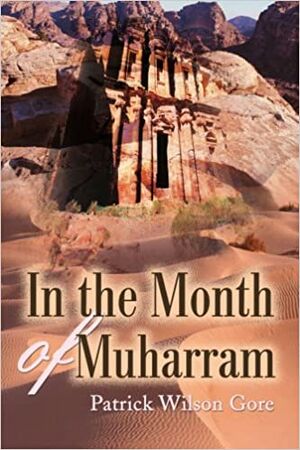In the Month of Muharram
The book In the Month of Muharram is a story of high adventure, involving plausible characters and exotic places. A good and thought-provoking read.
 | |
| Author | Patrick Wilson Gore |
|---|---|
| Language | English |
| Genre | story of high adventure, |
About the author
Patrick Wilson Gore was born on May 27, 1938. He received his education at the Oxford University (B.A., 1962), the (M.A., 1966). He is writer, journalist, Associated Press, Columbus, OH, editor, 1968-69; Humber College, Toronto, Ontario, Canada, assistant chairman, 1969-73; North Frontier Communications, Perth, Ontario, president, 1971-87, and member of Canadian Intelligence and Security Association, Canadian Institute of Strategic Studies, National Defence College Association.
He is a citizen of three countries. He has travelled in fifty countries and lived and worked in three continents. He says: “my primary task is to entertain the reader; I hope that the information and insights I share may broaden his understanding of what is really going on in the world”.
His most Popular Books are:
- Escape from Marrakesh, Simon & Pierre (Toronto, Ontario, Canada), 1983.
- Frame-up in Belize, Simon & Pierre (Toronto, Ontario, Canada), 1985.
- And Death in Erin, Writers Club Press (Lincoln, NE), 2000.
- Bolivar's Right Hand, Writers Club Press (Lincoln, NE), 2001.
- In the Month of Muharram, Writers Club Press (Lincoln, NE), 2001.
- Jango Says, Writers Club Press (Lincoln, NE), 2001.
- Staggerbush: A Story of the New Millenium, Writers Club Press (Lincoln, NE), 2001.
- The Gold Miner of Magadan, Writers Club Press (Lincoln, NE), 2001.
About the book
This book published in iUniverse (May 29, 2001), has 188 pages and best sellers rank of 22,281,362 in Books.
This is a story with an adventure theme. At the first of the book, the author notes that the characters and events are imaginary and any resemblance to real people, is coincidental. The subject of the story is about the third secret of Fatima, which according to the ayatollahs is a plan for a new crusade by the oil-thirsty West with the aim of destroying Islam. The protagonist, Kerne, is hired by a wealthy businessman to obtain the full text of Fatima's prophecy from the Vatican archives. But his courageous efforts lead to the kidnapping of his daughter Tess by the Iranians. He tracks his daughter to Alamut Castle in the Elburz Mountains, and decides to save her with the help of Soviet veterans. In the ups and downs of the story, the author uses the title of religious events and real characters (e.g., Hussain, Fatima, Khomeini, Moharram, and …) to advance his story.
Selected part of the book
The hojjatoleslam was sitting at the Western-style desk in his office at Alamut. Smith sat opposite him. They were discussing the file that lay open between them—one with which both were evidently familiar. “So Mr.Kerne just decided to drop in and pick up Miss Thorsteinson and take her home to her mother,” said the Iranian. “
“What do you propose?” asked the hojjatoleslam. “Send Kerne to get us the Fatima document from Rome. Our price for the release of the Thorsteinson girl. If he was sufficiently interested in her to try a foolish stunt like this, he might very well go for a deal.”
“If he gets the document, fine,” said the hojjatoleslam. “One objective is achieved. But whether he does or not, the assignment puts him squarely where we want him. We must convince him we're sincere...” Smith laughed. The hojjatoleslam almost cracked a smile.
Kerne was pounding down a mountain slope some miles west of where the castle of Alamut hung over its remote valley in the Elburz Mountains. He had an Iranian army G3 rifle in his hand. Behind him, a dozen men, all armed, were strung out along the slope in pursuit. Kerne was fit and strong; he ran hard, steadily, maintaining his lead over the men who followed him, but he couldn’t shake them off. They, too, seemed to be in good physical condition.
But Kerne was pursuing as well as pursued. Ahead of him, another half-dozen men were running, all dressed in khaki fatigues and led by a seven-foot tall, coal-black Sudanese of the Dinka tribe, Abu-Ranat, who bounded effortlessly over every obstacle, steadily pulling away from the others.
Most of the runners were Iranian, but there were several Iraqi, Lebanese and Syrian Shiites, half a dozen Palestinians, and a couple of Moroccans. Kerne was the only westerner in the long string.